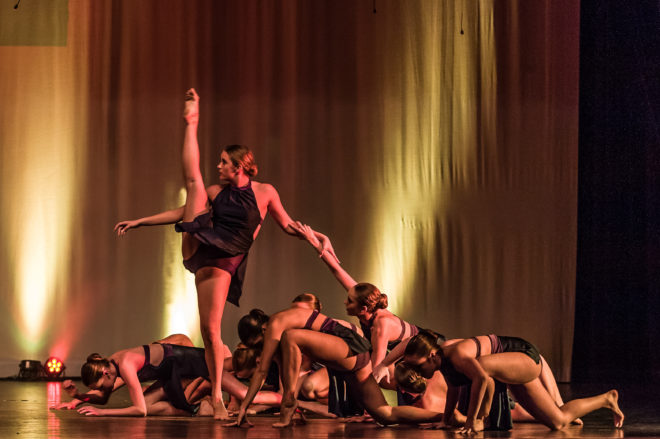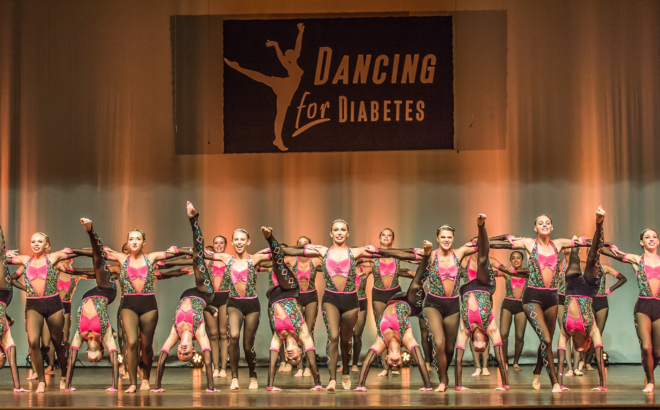Dancing For Diabetes
 At 10 years old, I declared my type 1 diagnosis was not going to control me. Inspired by my middle school dance class, I combined my love for dance with my new diagnosis and created Dancing for Diabetes.
At 10 years old, I declared my type 1 diagnosis was not going to control me. Inspired by my middle school dance class, I combined my love for dance with my new diagnosis and created Dancing for Diabetes.
My mission was to spread type 1 diabetes (T1D) awareness through the art of dance, to better educate the community, to raise funds to find a cure and to inspire those with diabetes to live healthy and active lives. Seventeen years later, Dancing for Diabetes continues as a thriving nonprofit organization based in Central Florida, operating year round for children and adults with diabetes.
I remember many moments around the time of my diagnosis. I remember being very unsure of what was going on. Even when the problem was identified and everyone knew I had type 1 diabetes, it still didn’t click. I was only 10. I was aware of the changes all around me. I immediately felt as though everyone was treating me with kid gloves. No one wanted to upset me. No one wanted to bother me. No one wanted anything to go wrong. And it all happened basically overnight.
Less than a year after my diagnosis, I started middle school. I was very shy and “different.” Administrators and teachers gave me special attention all in attempt to make sure nothing went wrong. It was a performing arts middle school, so as part of my electives I enrolled in the dance department.
Here was my turning point. I loved the class. I loved the instructor. I loved the content. And I loved the creativity it allowed.
In an interview with a magazine, I was once asked if living with diabetes gets easier over time. I loved this question, because I had never thought about the answer before. My answer was long winded; I explained that living with T1D changes as your life course evolves, but at its core was the word, “No.”
Being a kid and having diabetes is a lot to handle. I was very shy in middle school. After I dressed into my dance clothes and before my dance class started, I would kneel on the ground, behind my teacher’s desk, where I pricked my finger and tested my blood sugar in secret. Looking back, I’m upset I hid like that, but I wasn’t yet comfortable living with T1D. At the time, I just wanted to be like everyone else.
But at some point I mastered being a pre-teen with T1D, then a teen, then a college student, then a young professional. Each of these categories had its own set of challenges. I had to learn how to handle T1D during puberty, while learning how to drive, while taking tests in school, while socializing in college, while going on dates, during interviews and in meetings. It’s not like diabetes sits still while you live your life. So as soon as you “figure” diabetes out, it throws another curve your way.
My confidence has grown over time. Now I want the same for others.

Just a few years ago someone told me a story about being at a restaurant as a family having dinner. Their son took out his meter to prick his finger, and a stranger stopped by to say how disgusting it was to see that and suggested that they go to the restroom next time. This made me mad. It also made me realize I had too often hidden my diabetes, not on purpose but by habit.
In that moment I made a life-changing decision. I would always place my meter on the table to test because it needed to be seen. Perhaps no one would see me or even realize what I was doing. Then again, maybe another individual with T1D would see me and feel moved to do the same. In time, I hoped, more and more people without T1D would see all of us testing our blood sugars.
At Dancing for Diabetes, we’ve made a space where living with diabetes is the norm and is normalized. Our three largest programs are the Awareness Campaign, Kids with Diabetes and the Annual Show. The Awareness Campaign is a series of videos produced by Dancing for Diabetes that bring to light the truths and realities of living with T1D. The Kids with Diabetes dance program is a series of free dance classes taught to T1D youth. And our Annual Show brings together more than 350 dancers from across Central Florida. Our goal is to provide an evening of entertainment and hope for our audience.
Dancing for Diabetes has been a positive outlet for me, and I hope as well for those I have worked with along the way. But the outside world does come back in to remind me how much work is left to do. Reading inaccurate information on diabetes or hearing jokes about diabetes hit me hard, but rather than get angry, I channel that energy into what I can do to continue to spread awareness.

This past fall, I was in the middle of filming our awareness campaign videos with three girls when I asked the question: what do you love about the kids program? They told me the program made it feel like there was a cure for diabetes because everyone in the room was the same. For the kids who dance with us, being in a room where the majority of people have T1D is life-changing. It evokes confidence like nothing else can, and it provides hope.
I make it a point in these classes to sit down in a circle with the kids and just talk. About things they love. Things that frustrate them. Things that make them laugh. And while I know they have impacted my life greatly, I believe they have impacted each other’s lives tremendously.
Read Finding a T1D Community in Perth by Emily Dowling.





